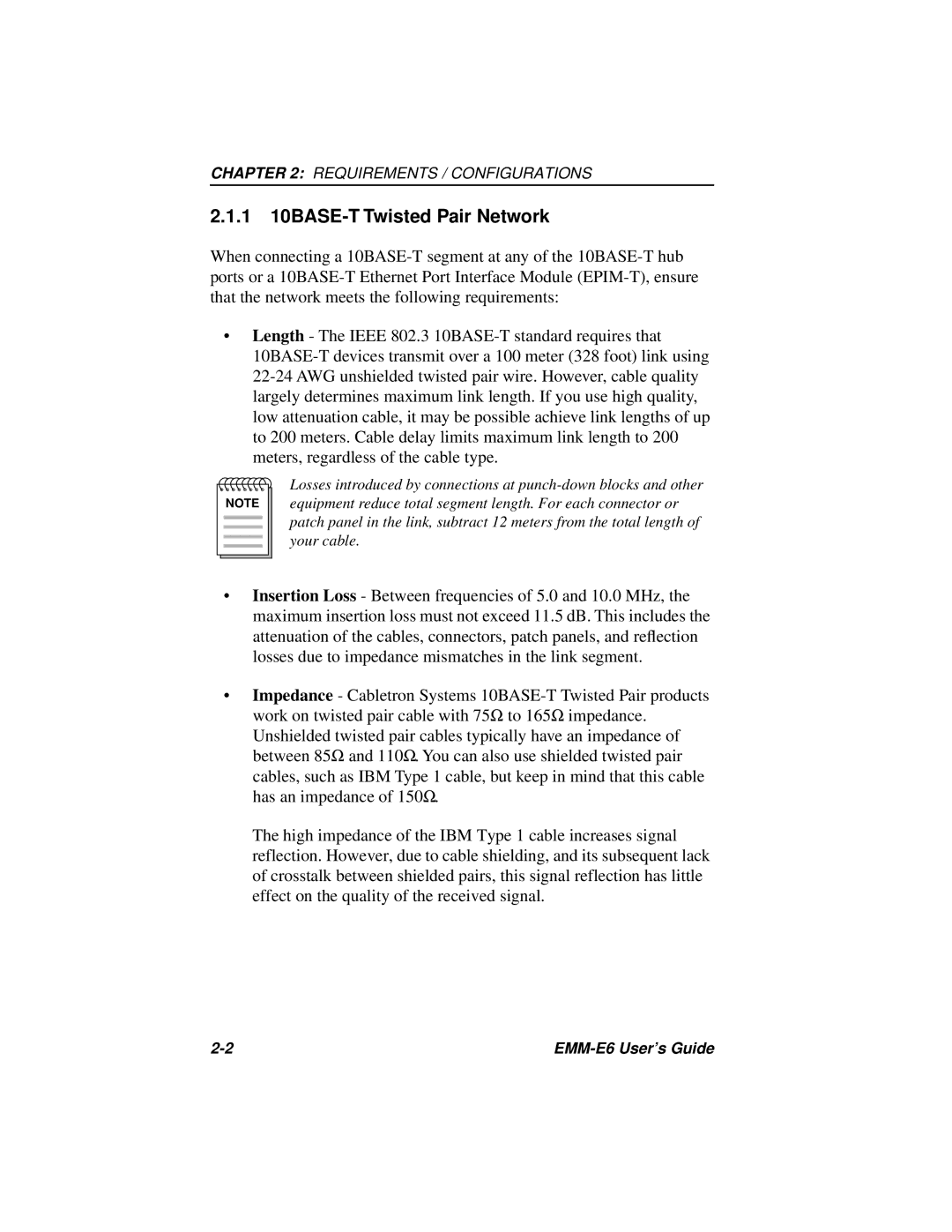
CHAPTER 2: REQUIREMENTS / CONFIGURATIONS
2.1.110BASE-T Twisted Pair Network
When connecting a
•Length - The IEEE 802.3
NOTE |
Losses introduced by connections at
•Insertion Loss - Between frequencies of 5.0 and 10.0 MHz, the maximum insertion loss must not exceed 11.5 dB. This includes the attenuation of the cables, connectors, patch panels, and reflection losses due to impedance mismatches in the link segment.
•Impedance - Cabletron Systems
Unshielded twisted pair cables typically have an impedance of between 85Ω and 110Ω. You can also use shielded twisted pair
cables, such as IBM Type 1 cable, but keep in mind that this cable has an impedance of 150Ω.
The high impedance of the IBM Type 1 cable increases signal reflection. However, due to cable shielding, and its subsequent lack of crosstalk between shielded pairs, this signal reflection has little effect on the quality of the received signal.
|
